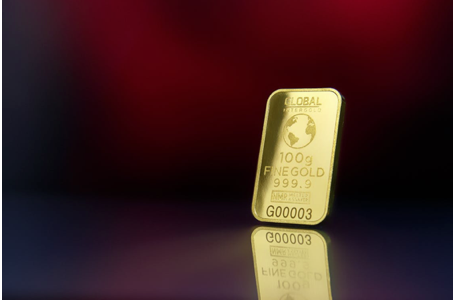
As a non-yielding asset, the price of gold is largely driven by macroeconomic factors and overall market sentiment.
Several key financial market trends can significantly impact gold trading activity and price fluctuations.
In this article, we will look at how to trade gold while watching market trends.
Economic Growth and Recession Fears
The state of the global economy is a major driver of gold prices.
During periods of strong economic growth, demand for riskier assets like stocks tends to rise while gold demand declines, causing gold prices to fall.
However, fears of an economic slowdown or recession often lead to a flight to safety that boosts gold buying as investors seek safe haven assets.
Sustained downturns and high market volatility typically correspond with surging gold prices.
Interest Rates and Inflation Expectations
Gold prices generally move inversely to real interest rates.
When central banks raise short-term interest rates to combat inflation, the opportunity cost of holding non-yielding gold rises, damping demand and prices.
Conversely, low or negative real rates boost gold's attractiveness.
Changes in inflation expectations are another key influence - if inflation is expected to rise, gold demand increases as well.
Uncertainty over the direction of interest rates and inflation often spurs gold investment.
Currency Market Fluctuations
Since gold is priced in U.S. dollars globally, fluctuations in the dollar and other major currencies can impact gold trading.
A weaker dollar makes gold cheaper for foreign buyers, increasing demand and pushing up prices.
Meanwhile, a stronger dollar damps gold purchases in other currencies.
Gold is often used as a currency hedge, so exchange rate shifts generate trading activity.
Geopolitical Tensions
Rising geopolitical tensions between nations often spur haven buying of gold.
Major political events like elections, trade disputes, and military conflicts increase uncertainty and instability, prompting investors to flock to gold as a diversifier and store of value during turmoil.
The potential for supply disruptions also boosts prices during upheaval.
Sudden geopolitical shocks as well as prolonged tensions can drive gold trading higher.
Stock Market Volatility
Turmoil and declines in the equities markets increase gold's relative appeal, as stocks and gold tend to move in opposition.
When stock market volatility rises due to economic or geopolitical crises, systemic risks, or simply increased uncertainty, investors will often rotate into gold as an alternative asset.
This flight to safety and portfolio diversification pushes gold prices higher.
While financial markets are complex and interrelated, examining each of these major trends individually can help investors understand the primary forces likely impacting gold prices at any given time.
Paying attention to which factors are exerting the most pressure can support more informed trading decisions.
Traders must also watch for situations where different forces may be acting in opposition to determine the likely net effect on gold's trading dynamics.
Gold trading is substantially influenced by macroeconomic trends, market risk sentiment, interest rates, currency shifts, geopolitics, and stock market volatility.
The unique role of gold as a safe haven and store of value during times of crisis ensures that it will remain sensitive to economic and market uncertainties.

